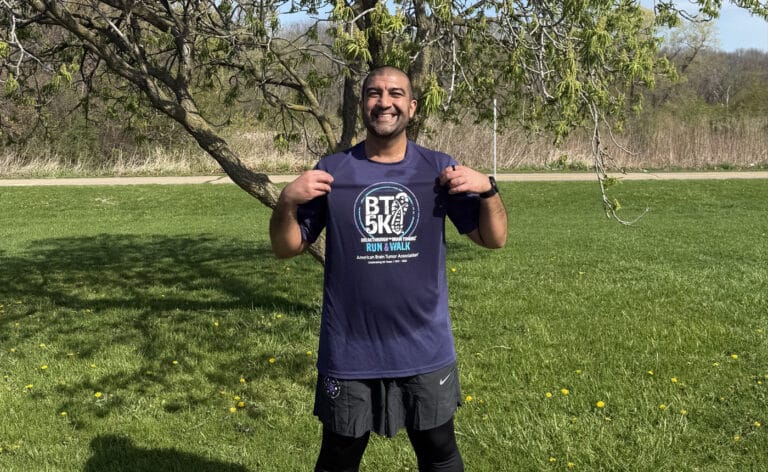ACL and MCL injuries common in athletes
Britta Alpen was playing in a soccer game for the University of Missouri at Kansas City when she tore the anterior cruciate ligament (ACL) and meniscus in her left knee. “I was trying to beat the other girl to the ball, and she hit my right foot that was in the air going for a volley,” Alpen says. “When I came down, I tried to land on my left foot, and that’s when I felt the impact and heard the pop.”
Knee ligament injuries like Alpen’s are among the most common in sports at all levels and can also happen to nonathletes in everyday activities. Casual sports fans tend to know little about the ligaments in the knee—the ACL and medial collateral ligament (MCL)—other than that these injuries can terminate players’ seasons and championship hopes.
To understand these ligament injuries, it helps to understand basic knee construction. The lower end of the femur (thigh bone) is located above the knee and makes up the top part of the knee joint—it provides attachment for most of your knee muscles. The bottom of your knee joint is your tibia (shin bone). Your kneecap, also called the patella, is at the front, protecting your knee joint and attaching the quadriceps muscle to the leg.
Both the ACL and MCL act as strong ropes or bands connecting the tibia to the bottom of the femur.
ABCs of the ACL
The ACL is located inside the knee and, according to Steven Chudik, MD, an orthopedic surgeon specializing in ACL surgery at Hinsdale Orthopaedics, “maintains the proper relationship of the femur to the tibia with regard to rolling, sliding and translation. It also helps keep the knee stable when athletes run, cut and jump.”
ACL injuries can happen anytime an athlete cuts, jumps or lands. They usually occur without any direct contact. “Your leg is in place, but your body is moving,” says Patrick Birmingham, MD, an orthopedic surgeon specializing in ACL injuries with Northshore Orthopaedic Institute as well as team physician for the Chicago Bears.
Alpen’s injury is a textbook example: Her knee was injured when her body was knocked in one direction while her left leg was firmly planted. Tears like these, in response to usual activity on the athletic field, occur all too frequently, especially to women and girls.
Female athletes, particularly young ones, are up to 10 times more likely than males to tear their ACLs, according to the American Academy of Orthopaedic Surgeons.
“Women are more susceptible to these injuries for myriad reasons including the shape of the knee and leg, greater ligament laxity, less overall strength of their hip or knee muscles and cyclical increase in looseness of ligaments that occurs in relationship to menstrual cycles,” says Victoria Brander, MD, a physical medicine and rehabilitation specialist at Northshore Orthopaedic Institute. “This is why education and training programs specific to young women are so important in preventing these injuries as well as in preventing the arthritis that often occurs two decades later.”
MCL Sprains
While female athletes are more susceptible to ACL injuries, an MCL tear is one that is especially prevalent in male football players. Athletes usually tear MCLs from a blow to the side of the knee that causes a knock-knee stress, or from violently twisting the knee.
“You tend to see these a lot with linemen in football,” says Craig Westin, MD, orthopedic surgeon at the Chicago Center for Orthopedics at Weiss Memorial Hospital. “Their knees get hurt by other players blocking them or falling against the outside of their knees in a pileup. That’s why you see a lot of college linemen wearing braces to protect their knees for a pro career.”
The MCL is located on the inner aspect of the knee, where the inseam of your pants is. It prevents the knee from bending inward. MCL injuries are more common than ACL and meniscus injuries, Westin says. Many minor MCL sprains are not reported because they can heal without medical care. MCL sprains are painful, but the knee isn’t loose and typically doesn’t require surgery.
“People usually feel better after a couple of weeks, and it heals itself,” Westin says. “Surgeries are much more common with ACL and meniscus tears because they don’t often heal on their own.”
There is no failsafe way to prevent ACL and MCL injuries, but training can help athletes lessen their likelihood. Off-season programs that focus on plyometric exercises that involve jumping and landing with correct form have been shown to reduce the risk of ACL and MCL injuries. But in-season—when the exposure is highest and the schedule is full with games and practices—is when prevention exercises are most needed.
Chudik works with a team of training experts to develop and disseminate in-season ACL prevention programs to local athletic teams and clubs participating in at-risk sports. However, he admits, “It’s hard to get a coach with so much to do to incorporate these in the regular season. Our goal is to make the programs as simple and efficient as possible.”
With better training, physicians and coaches hope to make these ligament injuries less common, prolonging athletes’ championship dreams.













